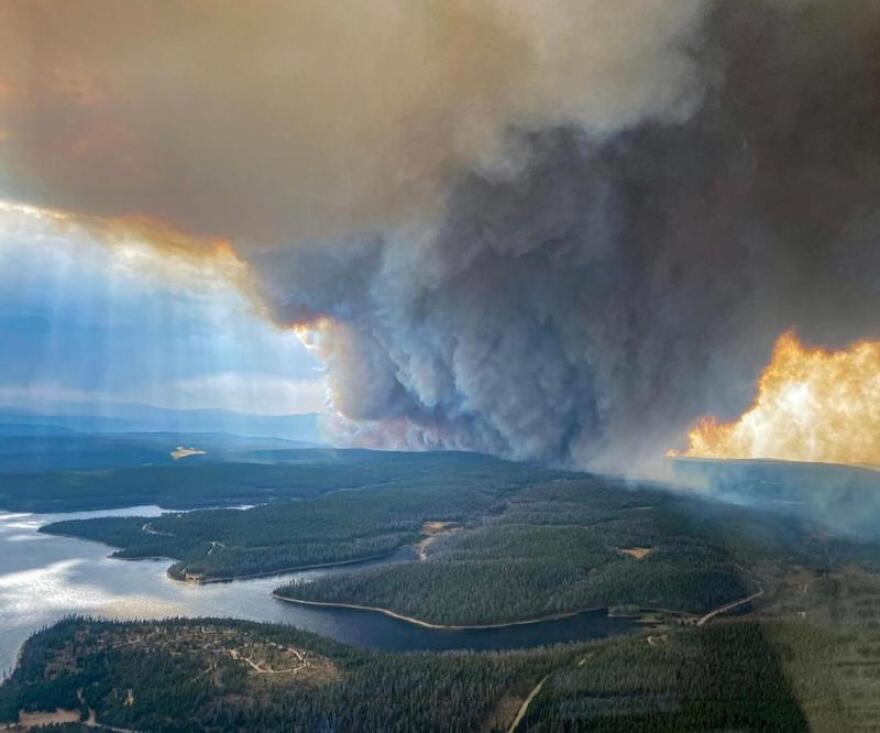Last fall, as record-sized wildfires burned in the Mountain West and ash fell from the sky, Bryan Shuman, a professor at the University of Wyoming, found himself looking back through old notes and emails from his wildfire research of subalpine forests. What stood out to him was how quickly the conversations he and his colleagues had been having escalated.
He said it went from predicting an increase in wildfires in the high-elevation forests of Wyoming and Colorado in "a few decades" to, "Wow, we just broke 2,000 years of fire records."
This week, a study that Shuman co-authored with Philip Higuera and Kyra Wolf was published in the Proceedings of the National Academy of Sciences of the United States of America. The three of them discovered that since the year 2000, wildfires are burning nearly twice as much area of the Rocky Mountains than compared to the last 2,000 years.
This struck Shuman for a number of reasons, one of which is the nature of subalpine forests. They are snowy, wet, and cool, and usually not too hospitable to wildfires. But those very characteristics are changing because of rising temperatures. Summers are hotter, snowfall is lower, and as a result, Shuman said subalpine forests are becoming less resilient and more susceptible to wildfires.
The researchers made this discovery with the help of charcoal found in lake sediment.
"Lakes are these unique sort of memory cells on the landscape," he said. "Every time there's one of these high-elevation fires, charcoal washes into alpine lakes and settles to the bottom, and gets left there as a layer."
Shuman said they knew, for example, that there was a large fire event about 1,000 years ago that burned a lot of Northern Colorado, but "even that event was not really comparable to where we are now, which is pretty striking.'
Of the impacts more subalpine forest fires could spell, Shuman pointed to snowpack, and two different ways things could go poorly.
One has to do with wind. If snow blows away more easily after a wildfire, it leaves a large area exposed to wind. The snow may also drift differently and that can affect how it accumulates, or whether or not there's issues with water supply.
Secondly, Shuman said, with less tree cover and other damage to the landscape like erosion, water quality can go down significantly.
In a press release, co-author and Ph.D. candidate at the University of Montana, Kyra Wolf said,"What's striking is that temperatures and, correspondingly, fire are now exceeding the range that these forests have coped with for thousands of years—largely as a result of human-caused climate change."
Co-author and University of Montana professor Philip Higuera added, "It may sound dire, but it's critical to remember that we have ample opportunities to limit or reverse climate warming, while still working to adapt to the increasing fire activity expected in upcoming decades."
As for the 2021 fire season, several are already burning in subalpine areas of our region.
This story was produced by the Mountain West News Bureau, a collaboration between Wyoming Public Media, Boise State Public Radio in Idaho, KUNR in Nevada, the O'Connor Center for the Rocky Mountain West in Montana, KUNC in Colorado, KUNM in New Mexico, with support from affiliate stations across the region. Funding for the Mountain West News Bureau is provided in part by the Corporation for Public Broadcasting.
Copyright 2021 Wyoming Public Radio. To see more, visit Wyoming Public Radio.




